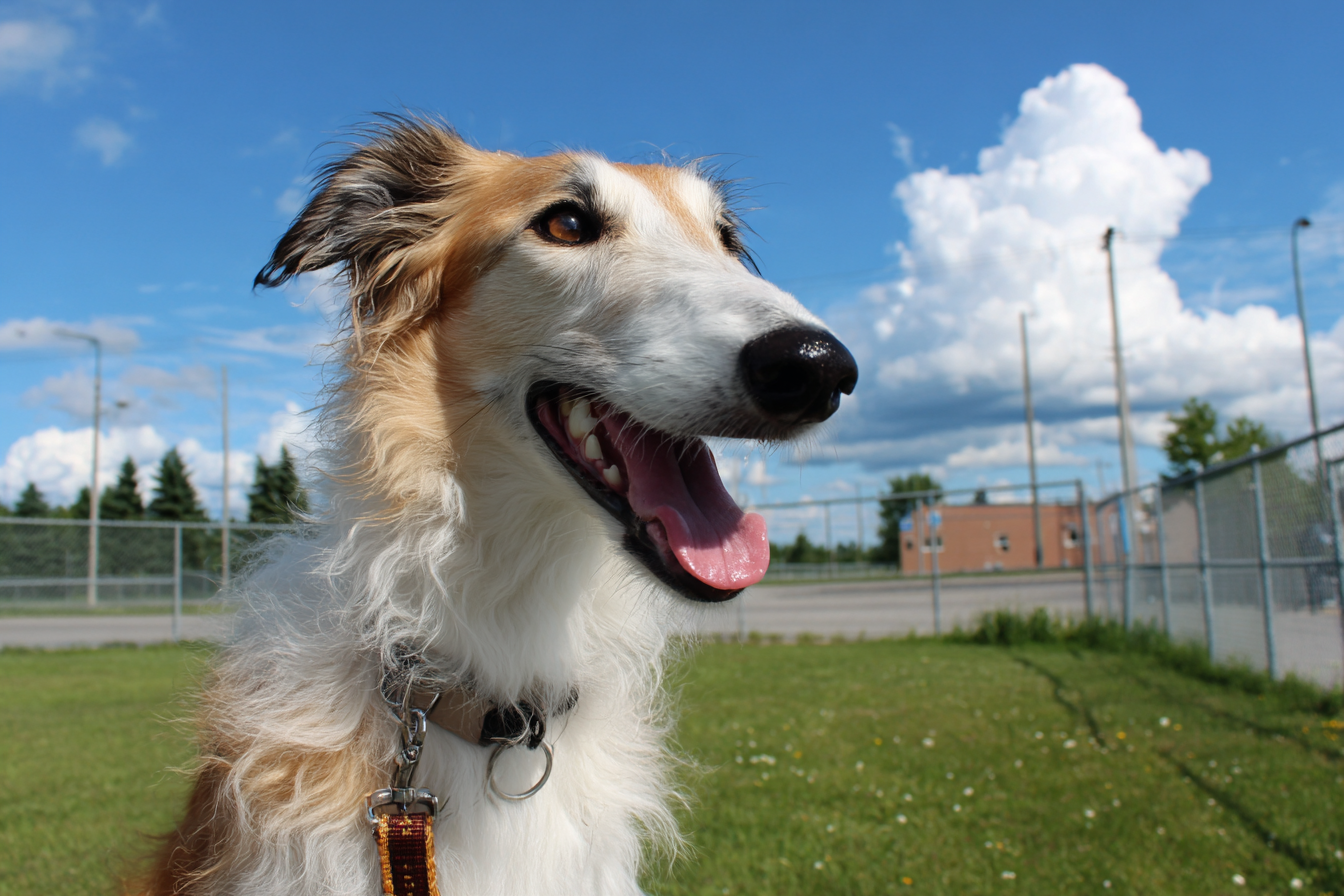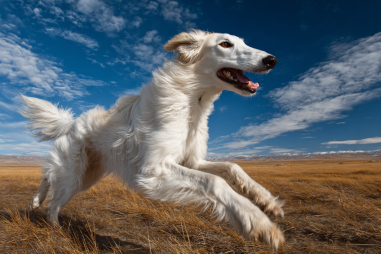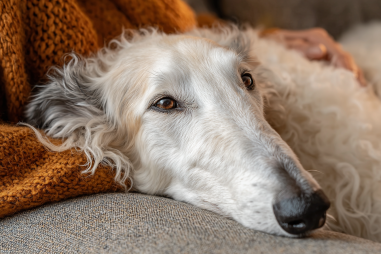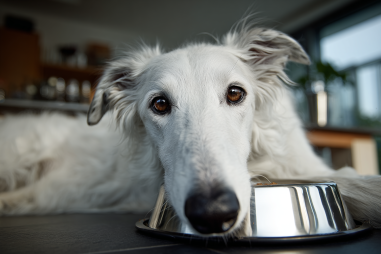Borzoi dogs, known for their elegance and speed, are a unique breed that requires thoughtful exercise routines to maintain their health and happiness. Their slender, delicate frame and swift movement make them susceptible to certain injuries if their exercise is not properly managed. Ensuring Borzoi exercise safety is key to keeping your dog active, joyful, and injury-free. In this guide, we’ll explore essential tips on how to safely exercise your Borzoi, focusing on their physical vulnerabilities, suitable warm-up routines, ideal environments, the right equipment, recognizing signs of distress, and basic first aid steps.
Understanding Borzoi Physical Vulnerabilities
Borzoi dogs are a sighthound breed characterized by their long, slender bodies, deep chests, and delicate limbs. Their physique is built for speed and agility but can also mean they are prone to certain injuries and conditions. Because they have less muscle mass compared to other more robust breeds, their bones and joints can be more vulnerable to strain or trauma.
One common concern in Borzoi exercise safety is their susceptibility to joint issues such as hip dysplasia and ligament tears, especially if they engage in high-impact activities without proper preparation. Their thin leg bones can be prone to fractures if they collide with hard surfaces or perform abrupt, intense movements without adequate conditioning.
Moreover, Borzois possess a deep chest that can make them vulnerable to bloat (gastric dilatation-volvulus), a life-threatening condition often triggered by vigorous exercise immediately after eating. Because of these vulnerabilities, understanding and respecting their unique anatomy during exercise is critical for their long-term health.
Proper Warm-Up and Cool-Down Steps
Just like human athletes, Borzois need proper warm-up and cool-down routines to prepare their muscles and joints for exercise and prevent injuries. Starting a workout without gradually increasing their activity level can lead to strains or muscle pulls.
A good warm-up for your Borzoi might include:
- 5 to 10 minutes of gentle walking to gradually raise their heart rate
- Slow-paced trotting or light running to activate muscles
- Simple mobility exercises such as walking over low obstacles or gentle stretches (if your dog tolerates them)
After your Borzoi finishes their exercise, a cool-down is essential to allow their heart rate and breathing to return to normal gradually. This helps reduce muscle stiffness and promotes recovery. Cool-down activities can include:
- 5 to 10 minutes of slow walking
- Encouraging your dog to lie down and rest in a comfortable, shaded area
- Light stretching if appropriate
Ideal Exercise Environments
Choosing the right environment for your Borzoi’s exercise significantly impacts their safety and enjoyment. Since Borzois are prone to injury from rough terrain or slippery surfaces, prioritize safe, well-maintained areas that allow them to run freely but without risk.
- Soft grass fields or parks: Cushioning surfaces like grass reduce impact on joints and bones, making it ideal for sprints and play.
- Fenced dog parks: These give Borzois the chance to run without a leash while ensuring they cannot run off or encounter hazards like traffic.
- Quiet trails: Well-maintained walking paths free from sharp rocks, potholes, or debris help prevent paw injuries and falls.
Avoid exercising your Borzoi on hot asphalt or concrete to prevent paw pad burns or overheating, and steer clear of muddy or icy areas that can increase the risk of slipping and joint injury.
Leash and Harness Considerations
Leash and harness choices are integral to ensuring control, comfort, and safety during your Borzoi’s outdoor activities. Borzois have long, narrow heads and necks, so selecting the right gear can prevent choking or neck strain.
- Harness over collar: A well-fitted harness distributes pressure across the chest and shoulders rather than the delicate neck area, reducing the risk of tracheal or cervical injury.
- Front-clip harnesses: These can help manage pulling behaviors gently, giving you better control without causing discomfort.
- Lightweight, durable materials: Choose gear that won’t weigh your Borzoi down or irritate their sensitive skin.
- Leash length: Adjustable or long leashes provide freedom while allowing you to maintain control, especially in areas that are not securely fenced.
Always inspect your Borzoi’s harness and leash before outings to ensure there are no signs of wear or damage that could lead to accidental escapes.
Signs of Strain or Injury to Watch For
A crucial element of Borzoi exercise safety is being vigilant for any signs of strain, discomfort, or injury, so you can respond quickly and prevent worsening conditions. Some common signs to watch for include:
- Limping or favoring one leg
- Excessive panting, difficulty breathing, or signs of distress
- Reluctance to move, jump, or continue exercise
- Swelling or heat around joints or limbs
- Unusual behavior such as vocalizing in pain or hiding
- Changes in gait or coordination
If you notice any of these signs, stop your Borzoi’s activity immediately and assess the situation calmly. Avoid forcing your dog to keep moving, as this can exacerbate injuries.
First Aid Basics for Borzoi Dogs
Understanding basic first aid can be invaluable if your Borzoi experiences an injury during exercise. Here are some foundational steps to keep in mind:
- Control bleeding: Apply gentle pressure using a clean cloth or bandage if you notice bleeding.
- Immobilize injured limbs: Use a splint or support if possible to prevent further harm until veterinary care is available.
- Soothe strains or sprains: Rest your dog and apply a cold compress to reduce swelling for 15-20 minutes, making sure not to apply ice directly to the skin.
- Monitor breathing and consciousness: Keep your Borzoi calm and check for signs of shock (pale gums, rapid breathing, weakness)—seek emergency care if needed.
- Hydration: After minor injuries or strain, provide fresh water and encourage rest.
Importantly, always have your veterinarian’s contact information readily available and consult them for any serious injuries or if you are unsure how to proceed. Prompt professional care will ensure the best recovery for your beloved dog.
Keeping Your Borzoi Happy and Safe While Exercising
Exercise is vital to a Borzoi’s physical and mental well-being, but it must be approached with their unique needs in mind. Consistently applying the tips shared here can help protect your dog from injury and make physical activity a positive experience. Remember to start slow, provide appropriate warm-up and cool-down, choose safe settings, use the right gear, stay vigilant for signs of discomfort, and be prepared with basic first aid knowledge.
With attentive care and a commitment to safety, your Borzoi will enjoy running, playing, and exploring for many healthy, happy years to come.







